US Airways 2008 Annual Report Download - page 75
Download and view the complete annual report
Please find page 75 of the 2008 US Airways annual report below. You can navigate through the pages in the report by either clicking on the pages listed below, or by using the keyword search tool below to find specific information within the annual report.-
 1
1 -
 2
2 -
 3
3 -
 4
4 -
 5
5 -
 6
6 -
 7
7 -
 8
8 -
 9
9 -
 10
10 -
 11
11 -
 12
12 -
 13
13 -
 14
14 -
 15
15 -
 16
16 -
 17
17 -
 18
18 -
 19
19 -
 20
20 -
 21
21 -
 22
22 -
 23
23 -
 24
24 -
 25
25 -
 26
26 -
 27
27 -
 28
28 -
 29
29 -
 30
30 -
 31
31 -
 32
32 -
 33
33 -
 34
34 -
 35
35 -
 36
36 -
 37
37 -
 38
38 -
 39
39 -
 40
40 -
 41
41 -
 42
42 -
 43
43 -
 44
44 -
 45
45 -
 46
46 -
 47
47 -
 48
48 -
 49
49 -
 50
50 -
 51
51 -
 52
52 -
 53
53 -
 54
54 -
 55
55 -
 56
56 -
 57
57 -
 58
58 -
 59
59 -
 60
60 -
 61
61 -
 62
62 -
 63
63 -
 64
64 -
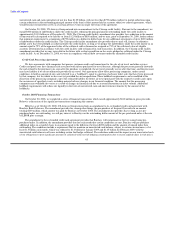 65
65 -
 66
66 -
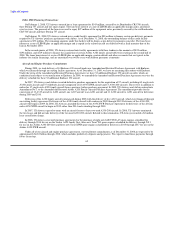 67
67 -
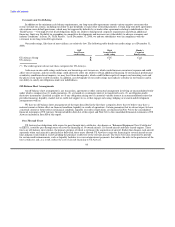 68
68 -
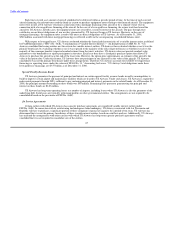 69
69 -
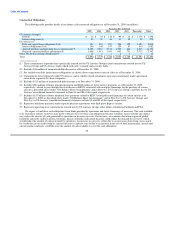 70
70 -
 71
71 -
 72
72 -
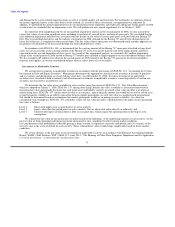 73
73 -
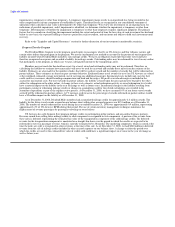 74
74 -
 75
75 -
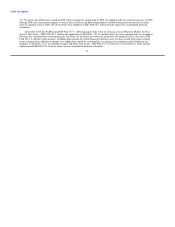 76
76 -
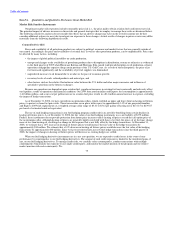 77
77 -
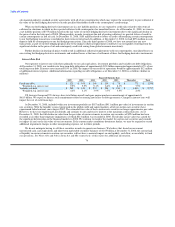 78
78 -
 79
79 -
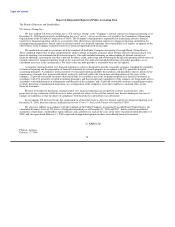 80
80 -
 81
81 -
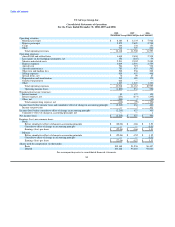 82
82 -
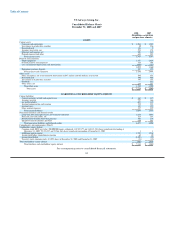 83
83 -
 84
84 -
 85
85 -
 86
86 -
 87
87 -
 88
88 -
 89
89 -
 90
90 -
 91
91 -
 92
92 -
 93
93 -
 94
94 -
 95
95 -
 96
96 -
 97
97 -
 98
98 -
 99
99 -
 100
100 -
 101
101 -
 102
102 -
 103
103 -
 104
104 -
 105
105 -
 106
106 -
 107
107 -
 108
108 -
 109
109 -
 110
110 -
 111
111 -
 112
112 -
 113
113 -
 114
114 -
 115
115 -
 116
116 -
 117
117 -
 118
118 -
 119
119 -
 120
120 -
 121
121 -
 122
122 -
 123
123 -
 124
124 -
 125
125 -
 126
126 -
 127
127 -
 128
128 -
 129
129 -
 130
130 -
 131
131 -
 132
132 -
 133
133 -
 134
134 -
 135
135 -
 136
136 -
 137
137 -
 138
138 -
 139
139 -
 140
140 -
 141
141 -
 142
142 -
 143
143 -
 144
144 -
 145
145 -
 146
146 -
 147
147 -
 148
148 -
 149
149 -
 150
150 -
 151
151 -
 152
152 -
 153
153 -
 154
154 -
 155
155 -
 156
156 -
 157
157 -
 158
158 -
 159
159 -
 160
160 -
 161
161 -
 162
162 -
 163
163 -
 164
164 -
 165
165 -
 166
166 -
 167
167 -
 168
168 -
 169
169 -
 170
170 -
 171
171 -
 172
172 -
 173
173 -
 174
174 -
 175
175 -
 176
176 -
 177
177 -
 178
178 -
 179
179 -
 180
180 -
 181
181 -
 182
182 -
 183
183 -
 184
184 -
 185
185 -
 186
186 -
 187
187 -
 188
188 -
 189
189 -
 190
190 -
 191
191 -
 192
192 -
 193
193 -
 194
194 -
 195
195 -
 196
196 -
 197
197 -
 198
198 -
 199
199 -
 200
200 -
 201
201 -
 202
202 -
 203
203 -
 204
204 -
 205
205 -
 206
206 -
 207
207 -
 208
208 -
 209
209 -
 210
210 -
 211
211 -
 212
212 -
 213
213 -
 214
214 -
 215
215 -
 216
216 -
 217
217 -
 218
218 -
 219
219 -
 220
220 -
 221
221 -
 222
222 -
 223
223 -
 224
224 -
 225
225 -
 226
226 -
 227
227 -
 228
228 -
 229
229 -
 230
230 -
 231
231 -
 232
232 -
 233
233 -
 234
234 -
 235
235 -
 236
236 -
 237
237 -
 238
238 -
 239
239 -
 240
240 -
 241
241 -
 242
242 -
 243
243 -
 244
244 -
 245
245 -
 246
246 -
 247
247 -
 248
248 -
 249
249 -
 250
250 -
 251
251 -
 252
252 -
 253
253 -
 254
254 -
 255
255 -
 256
256 -
 257
257 -
 258
258 -
 259
259 -
 260
260 -
 261
261 -
 262
262 -
 263
263 -
 264
264 -
 265
265 -
 266
266 -
 267
267 -
 268
268 -
 269
269 -
 270
270 -
 271
271 -
 272
272 -
 273
273 -
 274
274 -
 275
275 -
 276
276 -
 277
277 -
 278
278 -
 279
279 -
 280
280 -
 281
281 -
 282
282 -
 283
283 -
 284
284 -
 285
285 -
 286
286 -
 287
287 -
 288
288 -
 289
289 -
 290
290 -
 291
291 -
 292
292 -
 293
293 -
 294
294 -
 295
295 -
 296
296 -
 297
297 -
 298
298 -
 299
299 -
 300
300 -
 301
301 -
 302
302 -
 303
303 -
 304
304 -
 305
305 -
 306
306 -
 307
307 -
 308
308 -
 309
309 -
 310
310 -
 311
311 -
 312
312 -
 313
313 -
 314
314 -
 315
315 -
 316
316 -
 317
317 -
 318
318 -
 319
319 -
 320
320 -
 321
321 -
 322
322 -
 323
323 -
 324
324 -
 325
325 -
 326
326 -
 327
327 -
 328
328 -
 329
329 -
 330
330 -
 331
331 -
 332
332 -
 333
333 -
 334
334 -
 335
335 -
 336
336 -
 337
337 -
 338
338 -
 339
339 -
 340
340 -
 341
341 -
 342
342 -
 343
343 -
 344
344 -
 345
345 -
 346
346 -
 347
347 -
 348
348 -
 349
349 -
 350
350 -
 351
351 -
 352
352 -
 353
353 -
 354
354 -
 355
355 -
 356
356 -
 357
357 -
 358
358 -
 359
359 -
 360
360 -
 361
361 -
 362
362 -
 363
363 -
 364
364 -
 365
365 -
 366
366 -
 367
367 -
 368
368 -
 369
369 -
 370
370 -
 371
371 -
 372
372 -
 373
373 -
 374
374 -
 375
375 -
 376
376 -
 377
377 -
 378
378 -
 379
379 -
 380
380 -
 381
381 -
 382
382 -
 383
383 -
 384
384 -
 385
385 -
 386
386 -
 387
387 -
 388
388 -
 389
389 -
 390
390 -
 391
391 -
 392
392 -
 393
393 -
 394
394 -
 395
395 -
 396
396 -
 397
397 -
 398
398 -
 399
399 -
 400
400 -
 401
401
 |
 |

Table of Contents
Deferred Tax Asset Valuation Allowance
At December 31, 2008, US Airways Group has a full valuation allowance against its net deferred tax assets. In assessing the
realizability of the deferred tax assets, we considered whether it was more likely than not that some portion or all of the deferred tax
assets will be realized, in accordance with SFAS No. 109, "Accounting for Income Taxes." We generated NOL in 2008, which was
reserved by this full valuation allowance.
Recent Accounting Pronouncements
In September 2006, the FASB issued SFAS No. 157, "Fair Value Measurements." This standard defines fair value, establishes a
framework for measuring fair value in accounting principles generally accepted in the United States of America, and expands disclosure
about fair value measurements. This pronouncement applies to other accounting standards that require or permit fair value measurements.
Accordingly, this statement does not require any new fair value measurement. This statement is effective for fiscal years beginning after
November 15, 2007, and interim periods within those fiscal years. In December 2007, the FASB agreed to a one year deferral of
SFAS No. 157's fair value measurement requirements for nonfinancial assets and liabilities that are not required or permitted to be
measured at fair value on a recurring basis. As such, we did not apply the fair value measurement requirements of SFAS No. 157 for
nonfinancial assets and liabilities when performing our goodwill and other assets impairment test as discussed above in "Critical
Accounting Policies." We adopted SFAS No. 157 on January 1, 2008, which had no effect on our consolidated financial statements.
In December 2007, the FASB issued SFAS No. 141 (Revised 2007), "Business Combinations." SFAS No. 141R is effective for
fiscal years beginning after December 15, 2008 and adjusts certain guidance related to recording nearly all transactions where one
company gains control of another. The statement revises the measurement principle to require fair value measurements on the acquisition
date for recording acquired assets and liabilities. It also changes the requirements for recording acquisition-related costs and liabilities.
Additionally, the statement revises the treatment of valuation allowance adjustments related to income tax benefits in existence prior to a
business combination. The current standard, SFAS No. 141, requires that adjustments to these valuation allowances be recorded as
adjustments to goodwill or intangible assets if no goodwill exists, while the new standard will require companies to adjust current income
tax expense. Effective January 1, 2009, we adopted the provisions of SFAS No. 141R and all future decreases in the valuation allowance
established in purchase accounting as a result of the merger will be recognized as a reduction to income tax expense.
On January 1, 2008, we adopted the measurement date provisions of SFAS No. 158, "Employers' Accounting for Defined Benefit
Pension and Other Postretirement Plans, an amendment of FASB Statements No. 87, 88, 106, and 132(R)." The measurement date
provisions require plan assets and obligations to be measured as of the employer's balance sheet date. We previously measured our other
postretirement benefit obligations as of September 30 each year. As a result of the adoption of the measurement date provisions, we
recorded a $2 million increase to our postretirement benefit liability and a $2 million increase to accumulated deficit, representing the net
periodic benefit cost for the period between the measurement date utilized in 2007 and the beginning of 2008. The adoption of the
measurement provisions of SFAS No. 158 had no effect on our consolidated statements of operations.
In May 2008, the FASB issued FSP Accounting Principles Board ("APB") 14-1, "Accounting for Convertible Debt Instruments
That May Be Settled in Cash upon Conversion (Including Partial Cash Settlement)." FSP APB 14-1 applies to convertible debt
instruments that, by their stated terms, may be settled in cash (or other assets) upon conversion, including partial cash settlement of the
conversion option. FSP APB 14-1 requires bifurcation of the instrument into a debt component that is initially recorded at fair value and
an equity component. The difference between the fair value of the debt component and the initial proceeds from issuance of the
instrument is recorded as a component of equity. The liability component of the debt instrument is accreted to par using the effective
yield method; accretion is reported as a component of interest expense. The equity component is not subsequently re-valued as long as it
continues to qualify for equity treatment. FSP APB 14-1 must be applied retrospectively to previously issued cash-settleable convertible
instruments as well as prospectively to newly issued instruments. FSP APB 14-1 is effective for fiscal years beginning after
December 15, 2008, and interim periods within those fiscal years. The adoption of FSP APB 14-1 will result in increased non-cash
interest expense in future periods related to
73
